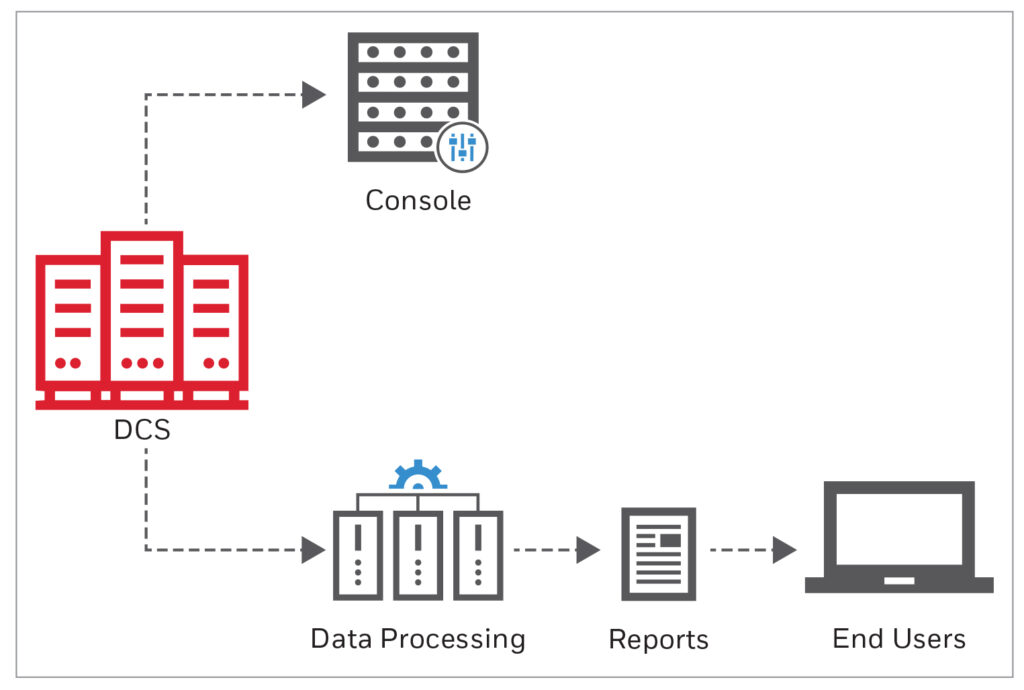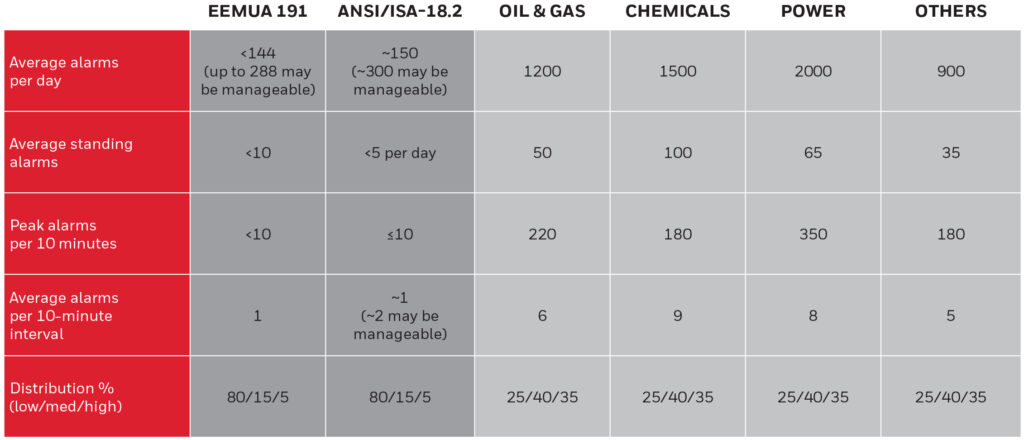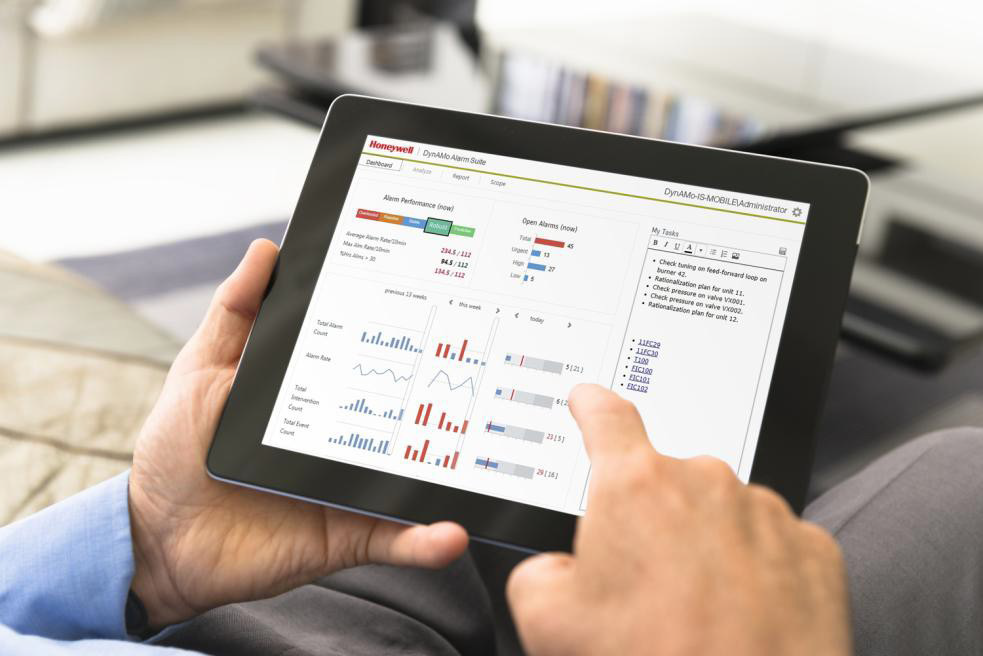
A properly design alarm management system will minimize production losses, safety incidents and environmental excursions. To do this effectively, the alarms need to be designed for the process and managed for continuous improvement. It is important to evaluate the alarms based on process upsets and verify the functionality of the alarms as they relate to the operation. It is the operator’s job to react to the alarm but the alarms need to be monitored and managed.
EVOLUTION OF THE CONTROL ROOM
The dynamics inside a typical control room have undergone a distinctive evolution over the last 25 years, and although the importance and function has not diminished, the way control rooms operate has changed significantly.
Twenty-five years ago, the control room used annunciator panels to display alarms and was local to the operational area with a limited and well-defined focus. By design, the number of alarms was limited due to instrumentation, cost and had action plans with procedural expectations for handling these engineered alarms.
Today’s control room is entirely different. Typically, a central control room oversees multiple areas that contain significantly more instrumentation along with advanced controls. The alarms are no longer engineered and have increased in numbers due to HAZOP or LOPAs processes, incident investigations and the ease of configuring alarms in a distributed control system (DCS). The increased number of alarms with a significant number of them incorrectly configured has created an environment for an operator to miss critical alarms because there are too many, or there is an attitude of complacency when dealing with alarms.
This evolution has created a need for the operator to use an integrated system to visualize what is happening across the different parts of the plant. Operators leverage technology to connect all of their systems for a more complete and comprehensive view of operations, but by doing so, it becomes difficult to determine which areas have the highest priority or require immediate attention.
THE VALUE OF A PROPERLY DESIGNED ALARM MANAGEMENT SYSTEM
A properly designed alarm management system, if implemented correctly, can provide immediate value.
By finding correlations between recurring conditions that trigger a destructive event such as a shutdown, equipment failure, or perpetuate an unsafe situation, a properly designed alarm system can provide operators with advance warning so that they can avoid the situation altogether.
The benefits include:
- Reduced maintenance costs by avoiding unplanned maintenance
- Increased production by minimizing downtime
- Increased profitability by improving productivity.
COMPONENTS OF AN ALARM MANAGEMENT SYSTEM
Data Collection. Data is automatically retrieved from the computer control system without user intervention
Data Cleansing and Pre-Processing. Filters and data cleansing rules are applied to the data to ensure data integrity, eliminate false positives and identify the data set to be analyzed
Calculation and Data Analysis. Apply any number of calculations or analyses to the defined data set. For example, alarm rate per operator per hour
Report. All results are stored for automated reporting and future data analysis exercises. For example, Key Performance Indicator (KPI) reports can automatically be generated and displayed using a web-based reporting application.
THE EFFECT ON ALARM MANAGEMENT
An effective alarm management system offers many benefits to a site, including:
- Improved facility safety
- Ability to prioritize the issues that are affecting productivity
- Being an integral component of early event detection systems.
Recently, there has been heavy emphasis placed on the number of alarms that operators see on a daily basis, and how this hinders their ability to be effective.
The argument is that there is a limit to the number of alarms an operator can handle at any given time, so we must reduce the total number of alarms that an operator has to deal with to a manageable level.
The table below is based on Honeywell’s findings of typical alarm scenarios across various process industries, as compared to the acceptable level of alarms as defined by the Engineering Equipment & Materials Users’ Association (EEMUA) and the International Society of Automation (ISA).
While these benchmarks provide a good understanding of how many alarms operators can handle, the basic purpose of alarms needs to be kept in mind. Alarms are meant to alert operators when there is an abnormal situation on the plant floor that is preventing optimal performance, whether that is from a safety or productivity perspective. A key alarm management priority is to ensure that alarms are being created in such a way that an operator receives the right alarm at the right time.
GETTING THE RIGHT ALARM AT THE RIGHT TIME
Given the propensity for developing alarms for any type of abnormal situation, thought must be given to finding ways of not only reducing the number of alarms, but also ensuring that operators are getting the right alarms with enough time to react to them and prevent a potential incident.
Establishing an alarm philosophy can reduce the number of alarms an operator faces by bringing focus to your alarm management strategy. An alarm philosophy will help you create and adhere to rules for improving and managing the effectiveness of your alarm systems. An alarm philosophy can help ensure that you engineer your alarms to follow industry best practices, standards and guidelines such as EEMUA 191, YA711, NUREG 0700, API 1167 and ISA 18.2.
An alarm rationalization will decrease duplicate or redundant alarms and improve the documentation for the designed alarms. It is a good practice to rationalize all alarms for new equipment and to include the rationalization process in HAZOPs, LOPAs and incident investigations. An alarm rationalization cannot only reduce your total number of alarms, but it can also improve the behaviour of any troublesome alarms and prioritize your alarms so that you can concentrate on those that have the biggest impact on the safety and performance of your plant.
REALIZING THE BENEFITS: OPERATE MORE INTELLIGENTLY
An effective alarm management system allows you to operate more efficiently and more intelligently. By using information systems to collect data from your equipment and processes, you are able to leverage the power of collaboration to find the connections between events across your plant. This information can help you to detect and automatically correct abnormal situations before they become problems, keeping your plant online and producing.
Alarm systems can now focus on alerting operators to events that are new, unique and detrimental to the process and allowing operators to spend the right amount of time addressing those situations.
This white paper was contributed by Honeywell. Learn more about how Honeywell’s alarm management solution can improve plant safety and reliability visit www.honeywellprocess.com/software.
Print this page



